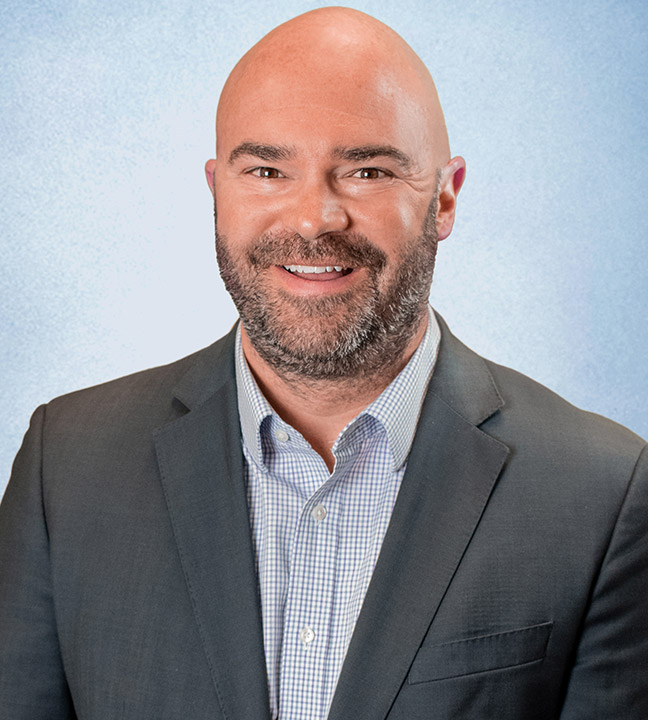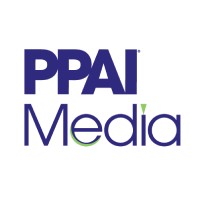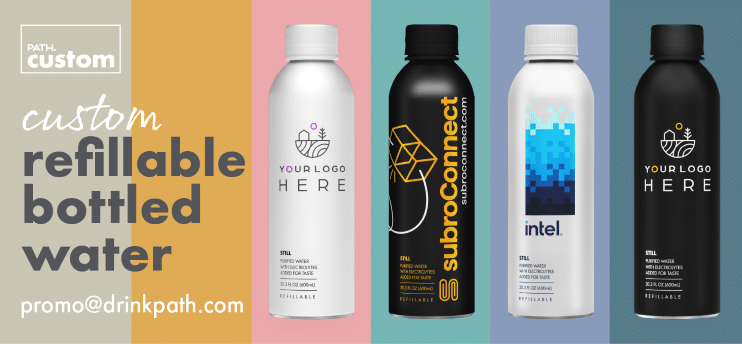Editor’s Note: The developments regarding foreign tariffs are fluid, and this story has been updated multiple times. PPAI Media expects to produce additional stories with new developments and broader implications in the coming days.
Donald Trump on Saturday announced he would be making good on a campaign promise to impose stricter tariffs on three of the United States’ largest trading partners, announcing a 25% levy against goods from Canada and Mexico, according to multiple reports.
While The White House imposed an additional 10% tariff on Chinese imports, it stopped well short of the 75% increase Trump had threatened on the campaign trail last year. Still, the increased tariffs on three primary sourcing destinations for promotional products is expected to be felt around the industry in the United States.
- The measures aim to address concerns over trade imbalances, illegal immigration, and drug trafficking.
By Monday morning, Trump announced that the tariffs placed on Mexican goods would be put on pause for one month, following what he deemed a productive phone call with Mexican President Claudia Sheinbaum.
Later that afternoon, Canadian Prime Minister Justin Trudeau announced that a pause of 30 days was placed on Canadian tariffs after a meeting with Trump. Both the Mexican and Canadian leaders seemed to have appeased Trump’s concerns about border security, at least to avoid an imminent trade war.
I just had a good call with President Trump. Canada is implementing our $1.3 billion border plan — reinforcing the border with new choppers, technology and personnel, enhanced coordination with our American partners, and increased resources to stop the flow of fentanyl. Nearly…
— Justin Trudeau (@JustinTrudeau) February 3, 2025
“This extension enables us as an industry to hit pause and re-evaluate the situation and potential impact on our industry if this comes into effect next month,” said Jonathan Strauss, president and CEO of Promotional Products Professionals of Canada, in response to Trudeau’s Monday announcement.
“To date, we’ve received numerous inquiries from members and also had many conversations with them. One thing we have garnered over the last few days is the strength and resiliency of our community and the Canadian industry. We will continue to work together to navigate through this as more news emerges.”
RELATED: FAQ: President Trump’s Tariffs On China, Canada & Mexico
With no such deals being reached with China, Beijing announced countermeasures on Tuesday, shortly after the 10% tariffs took effect just past midnight on the U.S. East Coast.
Beginning February 10, China will implement 15% tariffs on American coal and liquefied natural gas, and 10% tariffs on crude oil, farm equipment and certain other vehicles.
“The unilateral imposition of tariffs by the U.S. side seriously violates the rules of the World Trade Organization (WTO) and is not only not conducive to solving its own problems but also undermines the normal economic and trade cooperation between China and the United States,” the Chinese finance ministry said.
Amid a flurry of executive orders signed in the first days of the new Trump Administration, the President had directed the Commerce and Treasury departments and the U.S. Trade Representative to probe the economic and national security risks of large trade deficits and provide recommendations by Feb. 1. As details of the intended tariff increases began to emerge on Friday, Trump said there was nothing the three countries could do to delay the moves further, according to Reuters.
According to PPAI’s advocacy firm Thorn Run Partners, there is belief in many circles that Trump is using the tariffs as a tactic to open up renegotiations of the U.S.-Mexico-Canada trade agreement with new provisions. Thorn Run also suggested that legal actions could be brought against the new tariffs and thereby litigated in U.S. courts, but that such processes would be drawn out over time.
Chris Anderson, PPAI Board member and CEO of HPG, PPAI 100’s No. 6 supplier, says that the company’s manufacturing expansion into Mexico and Canada has bolstered its preparation to withstand such North American tariffs and that Canadian distributors can “take comfort” that HPG’s Debco and BCG presence (located in Toronto and Montreal, respectively) will be able to take their orders regardless of whether the pauses on tariffs end.
Regarding tariffs globally, including China, Anderson says:
“HPG will continue to take the long view in regard to the impact of tariffs. This includes, but is not limited to, shifting production and distribution among our existing North American facilities, adjustments to our global upstream supply chain and proactively seeking, and investing in, efficiency-driving opportunities within our entire ecosystem. Furthermore, the implementation of tariffs is often accompanied by shifts in currency valuations, which can have a partially mitigating impact on the real cost of tariffs.

Chris Anderson
CEO, HPG
“Prior to considering any possible tariff-driven increase to the selling price of our products, HPG will first exhaust any-and-all opportunities to offset the impact of tariffs. Only after all such mitigating strategies have been exhausted will HPG break out the net impact of tariffs and provide a transparent view of their impact on pricing.”
North American Promo Implications
The promotional products industry in North America, which relies heavily on imported goods, is poised to feel the immediate effects of these tariffs, if they are to actually go into effect at any point in the near future. Items sourced into the U.S. from China, Mexico and Canada will likely experience price increases, with some of the additional costs expected to be assumed by suppliers and distributors, and more being passed along to end buyers.
Exporters from Canada and Mexico, where several American suppliers diverted manufacturing in the nearshoring movement of recent years, also express worry about the impacts on business.
“Our members share many of the same concerns as those companies in the United States,” Strauss said in response to Trump’s Saturday announcement. “The issue is that many products come into Canada from the U.S. that are manufactured overseas. Presumably, any tariffs on those products will be passed along. The other concern is Made in Canada products that are exported to the U.S. could see a substantial price. Our supplier members who manufacture in Canada would certainly be impacted if a tariff was added to their products entering the U.S.”

Jonathan Strauss
President & CEO, PPPC
The only announced exemption on Saturday’s tariff levies was for Canadian oil, which will be subject to a 10% tariff. PPAI Media will be monitoring updates from the Trump Administration for further exemption news as it becomes available.
Nigel Harris, CEO of PowerStick.com, PPAI 100’s No. 75 supplier, has told PPAI Media that the Ottawa, Ontario-based supplier has decided to be clear in its plan amid these ongoing circumstances.
“I am not sure how other suppliers and distributors will react to this news, but we have decided to absorb these extra costs rather than passing them on to our customers,” Harris says. “With Canada’s retaliation and Trump’s promised retaliation, we have no idea where this is going, but the last thing we want is confusion in the minds of our customers.”

Nigel Harris
CEO, PowerStick.com
Since November’s election, American branded merchandise firms have been preparing for Trump to pay off his promise of increased tariffs. Some suppliers told PPAI Media they were stocking up on inventory to avoid supply problems during the first quarter of 2025. Others have sought to diversify sourcing to other countries, although during the campaign Trump had also floated a 10-20% tariff increase across the board.
Distributors have been gearing up as well by readying clients for the likelihood of higher costs.
“Tariff conversations started with some clients in December, as some clients were making budget forecasts,” says Javier Melendez, national sales executive at PPAI 100 distributor Walker-Clay. “Thankfully a lot of suppliers started making moves well in advance to prepare for this, but it’s going to be a factor, regardless, for everyone.”

Javier Melendez
National Sales Executive, Walker-Clay
Patrick Doyle, owner of Durham Promotional Products, a distributorship based out of Ontario, says that he expects promo firms in Canada to weather the tariffs despite likely economic pain felt on both sides of the border.
“Tariffs never benefit either side, but we’ll adapt,” Doyle says. “Yes, it will hurt, and there will be damage to the Canadian economy. But a very real consequence of that shift will be American suppliers who rely on shipping to Canada. Many of those businesses will likely see their orders shift back to Canadian manufacturers.”

Patrick Doyle
Owner, Durham Promotional Products
- Almost immediately after the tariffs were officially set, Canadian Prime Minister Justin Trudeau announced retaliatory tariffs on a wide range of American goods, signaling the beginning of a trade war.
Chinese Imports
Considering the massive amount of stateside promotional products manufactured in China, the threat of a 75% tariff increase was a major cause for concern, according to suppliers and distributors PPAI spoke to since the election.
Alok Bhat, PPAI’s market economist, research and public affairs lead, had projected that even a 20% increased levy against China could result in 4-8% price increases passed along to end buyers. At a smaller 10% rate on most products, the cost increase would be closer to 3-5%, or less depending on currency manipulation steps China could take to stave off demand reductions.

Alok Bhat
Market Economist, Research & Public Affairs Lead, PPAI
Furthermore, Trump has threatened a 100% tariff on the countries of Brazil, Russia, India and China if they follow through on the stated possibility of shifting to a gold-based “BRICS” currency that would theoretically replace the U.S. dollar in international trade, according to reporting from Jade Martinez-Pogue of Law360.
Trump has also hinted that the United Kingdom and European Union could also be in his crosshairs for tariffs.
“They don’t take our cars, they don’t take our farm products, they take almost nothing, and we take everything from them. Millions of cars, tremendous amounts of food and farm products,” Trump told reporters on Saturday, adding that tariffs on could be imposed “pretty soon.”
However, based on his relationship with U.K. Prime Minister Keir Starmer, Trump said that he believes a deal could still reached. “The U.K. is out of line. But I’m sure that one, I think, that one can be worked out,” he said.
‘De Minimis Exemption’ To Disappear
Overlooked by many in the tariff developments is the news that Trump also plans to put an end to the “de minimis” exemption that has allowed exported packages worth less than $800 to enter the U.S. without having to pay a tariff or duty.
The stated reason for ending this provision is that such exemptions make it easier for fentanyl to enter the country.
From a promo perspective, Aaron Moscoe, CEO of Ontario-based distributor TPS Promotions and Incentives, says this is likely to affect e-commerce orders from Canada.

Aaron Moscoe
CEO, TPS Promotions and Incentives
“If a client in the U.S. places an order and it’s, say, $140, we could previously ship it and there was a de minimis exception,” Moscoe says. “That’s going away. The e-store orders are of a significantly smaller average order size than a special order or a drop ship order.
“It could be as simple as something like a sample. Maybe the sample needs to go to the U.S. for approval from the client.”
On Tuesday, Peter A. Feldman, acting chairman of the United States Consumer Product Safety Commission, applauded Trump’s decision to revoke the de minimis privilege for all imports from China.
“The CPSC, which is charged with protecting American families from unreasonable risk of injury from consumer products, has long been concerned about the enforcement challenges when Chinese firms, with little or no U.S. presence, distribute consumer products under the de minimis provision,” Feldman said. “In addition to avoiding tariffs, shipments under this provision also skirt paperwork filings and safety assurances that CPSC relies on for targeting and screening.”
PPAI’s Efforts
A PPAI member survey last fall showed that 80% of suppliers and almost 40% of distributors saw tariffs and trade restrictions as the most impactful issues facing the industry under the new administration.
In response, PPAI and its advocacy firm Thorn Run Partners in December sent a letter to more than three dozen Congressional leaders and key committee members with a message conveying the economic impact of promotional products and encouraging Congress to exercise oversight of any future tariffs. The Association also asked members to download, customize and send the letter to their own representatives and senators.
This week, the Association will send another letter urging Congress to work toward a balanced trade policy that protects American interests while ensuring that small businesses, such as those in the promotional products industry, are not disproportionately burdened.
PPAI will provide the text of that letter later this week so members can use it as a template for your own letters to your representatives and senators. (Editor’s Note: The letter is available for download here.)
PPAI will be working closely with Thorn Run Partners and the Government Relations Advisory Council to assess its next actions in response to Saturday’s tariff orders and will communicate how members may assist in amplifying the industry’s messaging.
- Applications for Legislative Education and Action Day, PPAI’s annual in-person advocacy outreach on Capitol Hill, are open to members until Feb. 14.
- LEAD 2025 is scheduled for April 7-8.
WHAT CAN I DO?
Tell PPAI how these tariffs affect your business – click here to fill out our two-minute survey. Your input will help us better understand the impact of these tariffs so that we can advocate more effectively for our members.
Call your representative and senators. Find your members of Congress here.
- NOTE: You’ll have to click through to each official’s website to locate their contact information. Each office handles this differently – some feature a “Contact Me” button at the top of the homepage, while others are less prominent.
Download a copy of PPAI’s letter once it’s made available and customize and send it to your representative and senators.
- NOTE: It’s best to send each email individually to avoid getting caught in the spam filter for the Capitol email system.
For questions or suggestions on regulatory or government affairs issues, please contact Rachel Zoch at RachelZ@ppai.org.


